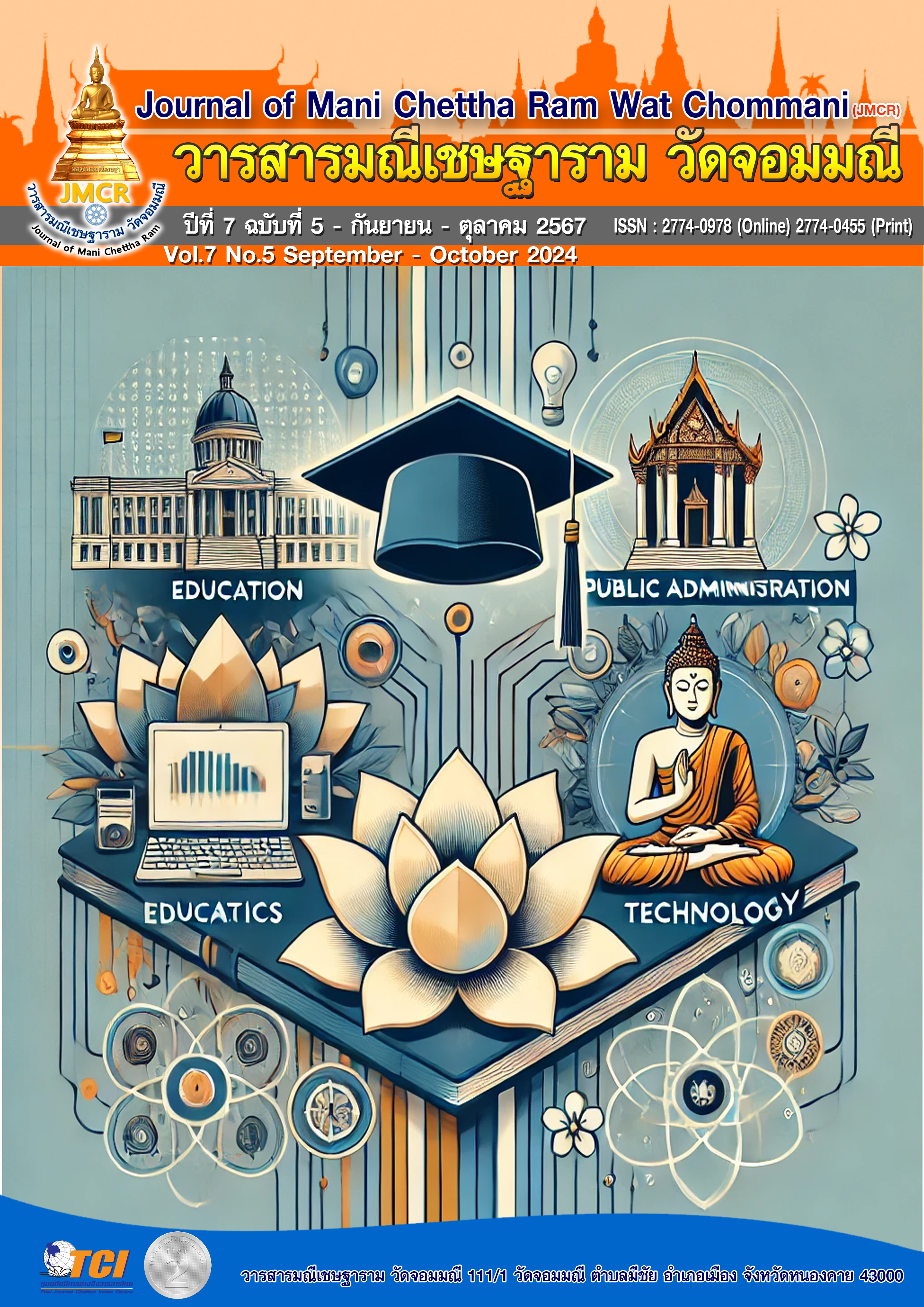การบริหารเชิงกลยุทธ์ตามแนวคิดบาลานซ์สคอร์การ์ดสู่การปฏิบัติ ในการบริหารสถานศึกษา
คำสำคัญ:
การบริหารเชิงกลยุทธ์, แนวคิดบาลานซ์สคอร์การ์ด, ประสิทธิภาพการบริหารสถานศึกษาบทคัดย่อ
การบริหารเชิงกลยุทธ์ตามแนวคิดบาลานซ์สคอร์การ์ดเป็นเครื่องมือการบริหารที่พัฒนาโดยศาสตราจารย์โรเบิร์ต แคปแลน และ ดร.เดวิด นอร์ตัน ในปี 1990 โดยมีวัตถุประสงค์เพื่อสร้างกรอบการวัดผลที่ครอบคลุมการดำเนินงานขององค์กรในหลายมิติ ทั้งด้านกลยุทธ์และการปฏิบัติจริง บาลานซ์สคอร์การ์ดประกอบด้วย 4 มุมมองหลัก ได้แก่
1) มุมมองด้านการเงิน มุ่งเน้นการสร้างผลตอบแทนทางการเงินและการจัดการทรัพยากรอย่างมีประสิทธิภาพ 2) มุมมองด้านลูกค้า เน้นการสร้างความพึงพอใจให้กับลูกค้าและตอบสนองความต้องการ 3) มุมมองด้านกระบวนการภายใน มุ่งพัฒนากระบวนการภายในเพื่อสร้างคุณค่าให้กับลูกค้า และ 4) มุมมองด้านการเรียนรู้และการพัฒนา เน้นการพัฒนาทรัพยากรบุคคลและระบบสารสนเทศ การนำบาลานซ์สคอร์การ์ดไปใช้ในองค์กรประกอบด้วยการวิเคราะห์กลยุทธ์ การกำหนดวัตถุประสงค์และตัวชี้วัด การติดตามและประเมินผล รวมถึงการปรับปรุงกลยุทธ์ตามผลการประเมิน ซึ่งช่วยให้องค์กรสามารถติดตามความก้าวหน้า วิเคราะห์ปัญหา และปรับกลยุทธ์ให้สอดคล้องกับเป้าหมายที่ตั้งไว้ โดยรวมแล้ว บาลานซ์สคอร์การ์ดช่วยเสริมสร้างระบบการบริหารภายในองค์กรให้มีความสมบูรณ์และยั่งยืน โดยการประเมินผลที่ครอบคลุมหลายมุมมอง ทำให้องค์กรสามารถบรรลุวัตถุประสงค์ได้อย่างมีประสิทธิผลและยั่งยืนในระยะยาว
References
กระทรวงศึกษาธิการ. (2546). พระราชบัญญัติการศึกษาแห่งชาติ พ.ศ. 2542 และที่แก้ไขเพิ่มเติม (ฉบับที่ 2) พ.ศ. 2545. กรุงเทพมหานคร: องค์การรับส่งสินค้าและพัสดุภัณฑ์ (ร.ส.ท.).
ณรงค์ศักดิ์ บุณยมาลิก. (2549). Balanced Scorecard. เรียกใช้เมื่อ 19 สิงหาคม 2567 จาก http://www.unescobkk.org/fileadmin/user_upload/aims/Pattaya_SCB_Jun05/Balanced_Scorecard_3649_3621_3632_KPIs.doc
ธาริณี สุโคตร. (2562). การบริหารโดย Balanced Scorecard. วารสารสมาคมพัฒนาวิชาชีพการบริหารการศึกษาแห่งประเทศไทย, 1(3), 47-57
ปิยะ โกฏิแสน. (2560). การพัฒนาแนวทางการบริหารสถานศึกษาโดยใช้ Balanced Scorecard ของโรงเรียนในสังกัดสานักงานเขตพื้นที่การศึกษามัธยมศึกษา เขต 27. ปริญญาการศึกษามหาบัณฑิต สาขาวิชาการบริหารการศึกษา ลิขสิทธิ์เป็นของมหาวิทยาลัยมหาสารคาม.
พงษ์ศักดิ์ ผกามาศ และดรุณี ปัญจรัตนากร. (2563). รูปแบบการบริหารสู่ความเป็นเลิศของโรงเรียนวิทยาศาสตร์สังกัดสำนักงานคณะกรรมการการศึกษาขั้นพื้นฐาน. การประชุมสถาบันพัฒนาครูคณาจารย์ และบุคลากรทางการศึกษา (สคบศ. วิชาการ) ครั้งที่ 1, จังหวัดนครปฐม. 28-29.
พสุ เดชะรินทร์. (2548). Balanced Scorecard รู้ลึกในการปฏิบัติ. กรุงเทพมหานคร: จุฬาลงกรณ์มหาวิทยาลัย
วีระเดช เชื้อนาม. (2547). เขย่า Balanced Scorecard. กรุงเทพมหานคร: บริษัท เฟื่องฟ้าพริ้นติ้ง จากัด.
Niven, Paul R. (2003). Balanced scorecard stepby-step for government and nonprofitagencies. Hoboken New Jersey : JohnWiley & Sons, Inc.
Soewarno, N. and Tjahjadi, B. (2020). Mediating Effect of Strategy on Competitive Pressure, Stakeholder Pressure and Strategic Performance Management (SPM): Evidence from HEIs in Indonesia. Benchmarking: An International Journal, 27(6), 1743-1764.
Sundgren, M. and Jaldemark, J. (2020). Visualizing Online Collaborative Writing Strategies in Higher Education Group Assignments. International Journal of Information and Learning Technology, 37(5), 351-373.
Wilkins, S. (2020). The Positioning and Competitive Strategies of Higher Education Institutions in the United Arab Emirates. International Journal of Educational Management, 34(1), 139-153.
Williams, Chuck. (2005). Management. (3rd ed). Ohio: South-Western Thomson.


